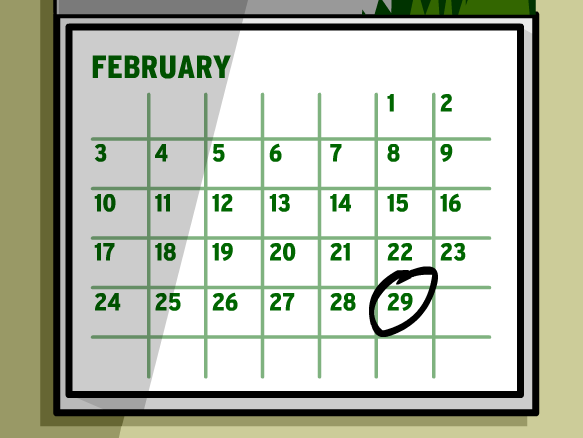
it includes 29 February) that begins on Sunday, 1 January, and ends on Monday, 31 December.Its dominical letters hence are AG.The most recent year of such kind was 2012 and the next one will be 2040 in the Gregorian calendar or, likewise, 19 in the obsolete Julian calendar. The history of the rules is rather involved. A leap year starting on Sunday is any year with 366 days (i.e. These three rules are trying to keep the seasons near fixed dates on the calendar, with the first day of spring (the vernal equinox) near March 21.Īlthough other rules have been proposed in attempts to improve on the rules of 1582, none has been adopted for civil purposes.

However, this also creates another issue since we added a little too much. What we are doing here is saying that each year has 365.25 days. This means that every year, 1 / 4 or 0.25 day is added. To solve this problem, every four years, we can just add 1 day to February to make it 29 days. Earth takes 365 days and 6 hours (approx). Therefore, using only 365 days on our calendar is not completely accurate. A leap year is a year, occurring once every four years, which has 366 days including 29 February as an intercalary day. It takes the earth about 365.2425 days to revolve around the sun. The leap year was created to make sure that our calendar is in line with the time it takes the earth to revolve around the sun. Leap years happen because a planet’s orbit around the Sun (year) and rotation on its axis (day) are not perfectly in line. Will the year 2100 be a leap year? No, sorry! Although 2100, can be divided by 4, 2100 is not a leap year. Keep reading if you need a deeper understanding of leap years. In fact, the next leap year after 2020 is 2024 since in 20 24, 24 can be divided by 4. In 20 22, 22 divided by 4 is equal to 5.5, so 2022 is not a leap year. In 19 88, 88 divided by 4 is equal to 22, so 1988 is a leap year. Now, you are ready to quickly tell if a year is a leap year. For instance, 19 16 is divisible by 4 because 16 is divisible by 4.īy the same token, 19 20 is divisible by 4 because 20 is divisible by 4. That is why in the chart above 1900, 2100, 2200, 2300 are not Leap Years but 20.


A number is divisible by 4 if the number represented by its last two digits is divisible by 4. Those years are not Leap Years unless they are also divisible by 400.


 0 kommentar(er)
0 kommentar(er)
